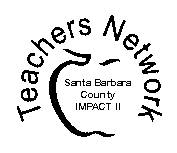The TeachNet Project sponsored with major funding by the AT&T Learning Network,
seeks to improve student achievement by providing training, grants, networking and resource sharing to teachers at four of the Teachers Network affiliates nationwide.


www.qad.com
How
it works:
"Surfing the Net with Authors" is a unit involving three components: favorite authors, animal studies and early learning experiences with the Computer/Internet. This unit engages primary students into experiencing a broader use of computers and the Internet while learning about identifiable Authors and researching animal facts. This unit, "Surfing the Net with Authors" is concurrently integrated with language arts and the science/social science standards based curriculums about animals and their habitats (Polar Regions, Deserts, Forest, Grasslands and Rain Forest.)
The unit begins with an introduction to the creative illustrator/author Jan Brett and her exceptional web site. This author has a large body of work, which is rich in written, visual, and auditory language and it is perfect for the diverse needs of students and their various learning styles. While at the author's web site, an animal is picked for further research and a teacher's demonstration helps start the students off in their selected animal/habitat research. (Suggested lesson start: Temperate Forest.)
This teaching pattern sets the course of the unit for rest of the year. As the year progresses, other authors and their web sites and research web sites are introduced and expanded. Students are taught to use the safe teacher bookmarked sites for independent student practice and learning. Written reflections are assigned and collected, computer skills are taught and reviewed and animal research and reporting is broadened.
Assessment:
This unit is an excellent tool for authentic teacher assessment.
Teacher assessments are based on participation, process, and product including:
1.) Formal and informal tests based on state academic standards, rubrics and check sheets, 2.) Completed student animal reports, worksheets and written /oral reflections, 3. Achievement and growth is assessed on the authentic pieces of student work that is collected and includes in their culminated student portfolios.
Rubrics:
Participation Rubric
4 points Completed independently
3 points Completed with the help of a peer.
2 points Completed with the help of a teacher.
1 points Completed partially.
0 points Little or no participation.
Standards:
Assignments and projects are carefully aligned to the Content Standards, these include; Language Arts: Literary Response and Analysis, Writing Strategies, Writing Application, Listening and Speaking, and Speaking Application. Arts and Drama: Art Appreciation and Design, Artistic Vision and Experience. Reflective Speaking and Performing. Mathematics: Number Sense and Statistics, and Data Analysis, Mathematical Reasoning. Science Standards: Life Sciences (animals and plants), Investigation and Experimentation. NETS Technology Standards: Practice and review a variety of media and technology resources for direct and independent learning.
Estimate of time: Five to six, twenty minute class periods per book and/or Biome. Five Biomes are taught through-out the year. Example: Jan Brett's Book The Mitten is taught as the initiating book for the animals and habitat/ Biome; Temperate Forest.
What
you need:
Software or Materials Used:
The technology used for this project includes; Appleworks, Encarta Multimedia Encyclopedia, an Internet browser, Kid Pix Studio Deluxe or ClarisWorks, and a printer. Digital Cameras/ camcorders and video equipment are helpful but not necessary. This unit can be successfully taught in a one computer wired classroom.
Keywords:
Computer skills, Internet, author web sites, picture books, animal reports, storytelling, illustrator and researching (books and web sites)
The Students:
This unit is geared towards students of varying abilities, grades kindergarten to second.
Overall Value:
This unit proves a "best fit practice." I have been very pleased with the student outcomes of this unit because it opens the World Wide Web to primary students in an appropriate and exciting way. Primary students love picture books and have a strong connection to authors they recognize. This is a delightful way to broaden their adventures on the computer while learning about the computer/internet and practicing newly learned skills.
This "Surfing the Net for Authors" unit is successful because it involves student learning in three areas of great interest: the Internet, animals and a favorite author such as, Jan Brett.
Details:
Subject Area:
English/Language Arts, Visual and Performing Arts, Mathematics, Science, Social Science, and Technology.
Starting Grade Level: Kindergarten
Ending Grade Level: Second
Tips for the Teacher:
Petti Pfau
pmpfau@hotmail.com
Petti Pfau is currently a first grade teacher in the Solvang
School District, Solvang, California. She has been teaching thirty-two years.
Her experience includes kindergarten through eight grades. She has been an active California Technology Assistance Project (CTAP) Mentor/Liaison and has completed her Level III Technology Proficiencies.